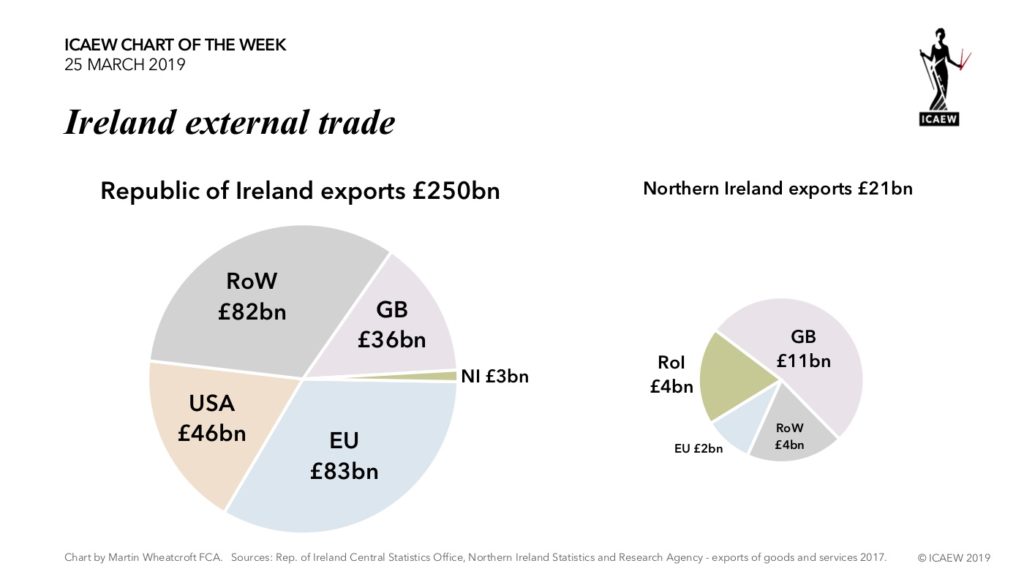
The ICAEW chart of the week returns to the topic of external trade; a topic of continuing interest in the UK as Parliament attempts yet again to resolve its differences over the proposed Withdrawal Agreement with the EU and the so-called ‘Irish backstop’ in particular.
Last week’s release by the Northern Ireland Statistics and Research Agency (NISRA) of its Broad Economy Sales and Exports Statistics for 2017 were particularly noteworthy (if not particularly timely). They put external sales of goods and services by Northern Irish businesses at £21.4bn, comprising sales to Great Britain (i.e. England, Wales and Scotland) of £11.3bn and exports to other countries of £10.1bn, including £3.9bn going to the Republic of Ireland.
We have compared these with international trade data from An Phríomh-Oifig Staidrimh, the Irish Central Statistical Office (CSO). They reported exports of €282bn in 2017, in the order of £250bn when converted into sterling. This included somewhere in the region of £3bn going to Northern Ireland (we couldn’t find a specific number for services exports in 2017, so this includes an inference from other data).
These numbers highlight the very different natures of the economies between the two parts of the island of Ireland, with the Republic exporting close to 12 times as much the North, even though only having 2.5 times as many people (4.8m in the Republic versus 1.9m in Northern Ireland). They also illustrate how trade with the North is of much less significance economically to the Republic (at around 1% of its exports), in contrast with Northern Ireland, where around 38% of its international exports (18% of external sales) are to the Republic.
Of course, high level economic statistics cannot provide the whole picture of economic relationships. For example, many of the Republic’s exports to the EU and elsewhere are transported via the UK, while the significance and importance of cross-border trade to the communities near to that border is likely to be much greater than for other parts of the island.
Ultimately, trade is only one element in the political, economic and constitutional relationships across the British and Irish Isles, and with their European neighbours. We may discover more about what is going to happen to those relationships in the next few days. Then again, we may not.